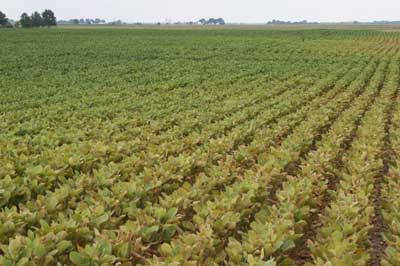
During hot, dry weather, the composition of plant sap often changes. Amino acid concentration may go up, along with sugars, as water content goes down. This can be of benefit to certain sap-feeding pests in field crops.
Increased amino acid content of plant sap is especially important for most of these pests. The pests which most often benefit under these conditions include mites, aphids, leafhoppers, thrips and whiteflies.
Hot, dry weather also reduces the activity of certain beneficial fungi that attack some of the pests mentioned above. To a lesser degree, hot, dry weather may also reduce the reproductive rate of certain beneficial insects that feed on these pests. The net result of all this is that some pests benefit greatly from hot, dry weather.
We have received reports of two-spotted spider mites being found in soybeans in some dry areas. Spider mites have phenomenal reproductive potential so this is a pest that we should watch for over the next few weeks. Although spider mites are not as common in corn, outbreaks do occur. This is particularly true near, and west of, the Missouri River.
It is expected that recent hot weather could also result in increasing populations of potato leafhoppers in alfalfa and dry beans. The presence of nymphs in sweep net samples is a good indicator that leafhopper reproduction is taking place and that rapid population increases could occur.
Aphids are another pest that could benefit from hot, dry weather. We need to watch for increasing populations of soybean aphids in soybeans, as well as various aphids in corn. The corn aphid most likely to become a problem in hot, dry weather is the corn leaf aphid. For most effective control, corn leaf aphids need to be scouted and detected during late whorl stage corn growth. Thrips are an insect that is generally not regarded as being of great pest significance. These insects do benefit from hot, dry weather and may be of more importance than we had earlier considered. There has also been some recent evidence that thrips may transmit soybean diseases, like soybean vein necrosis virus and tobacco streak virus.
Whiteflies are another insect that is not widely regarded as a serious pest in field crops. However, in some years we see an unusually high number of greenhouse whiteflies in soybeans. Like the other pest mentioned here, whiteflies are sap feeders. There has also been speculation that whiteflies may transmit virus diseases.
Contact your FS Crop specialist to help protect your yields from seed to harvest.